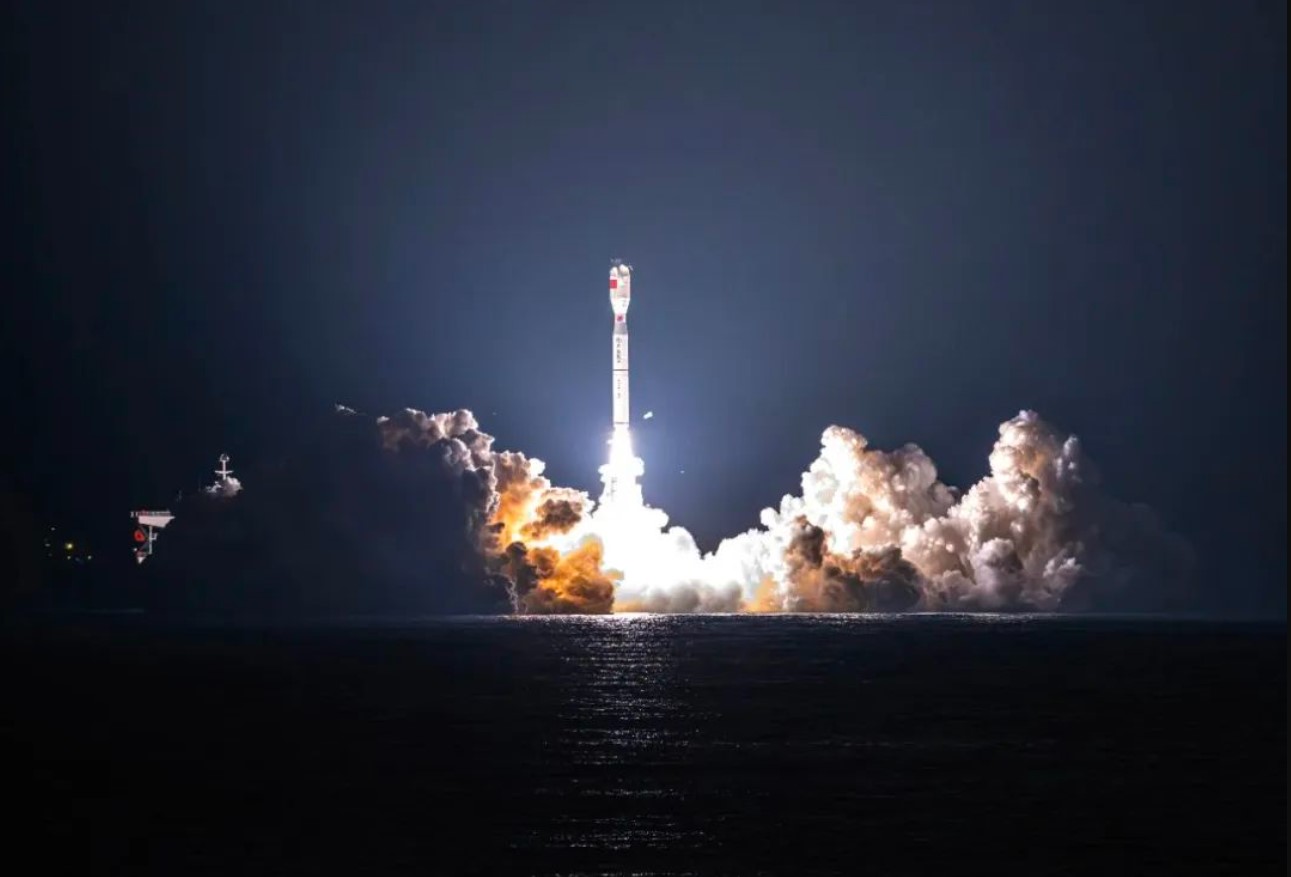HELSINKI — China launched a new internet technology experiment satellite from a sea platform Tuesday, apparently continuing tests for a low Earth orbit megaconstellation.
The Jielong-3 (Smart Dragon-3) solid rocket lifted off from a mobile sea platform from waters off the coast of Yangjiang, Guangdong province, at 2:24 p.m. Eastern (1924 UTC) Dec. 5. Launch success was declared around two hours after liftoff.
The internet test satellite was tracked by U.S. Space Force space domain awareness in a 904 x 922-kilometer altitude orbit inclined by 86 degrees. Details of the payload have not been disclosed.
The Jielong-3 is a four-stage rocket that can carry 1,500 kilograms of payload into a 500-kilometer Sun-synchronous orbit (SSO).
China Rocket Co. Ltd., a commercial spinoff from CALT, a main launch vehicle manufacturing arm under the state-owned China Aerospace Science and Technology Corporation (CASC), developed the Jielong-3. CASC is China’s main space contractor.
Jielong-3 has close similarities in terms of lift capacity, length and diameter (2.65 meters), payload fairing (3.35 meters) and mass at liftoff with the ZK-1A rocket. CAS Space, a commercial rocket arm of the Chinese Academy of Sciences, developed the ZK-1A.
The launch comes just under a year after the first, also from a mobile sea platform. The successful second launch marks the Jielong-3 becoming operational. China Rocket is now looking to ramp up production.
The launch was China’s 56th orbital launch of 2023. It followed a return-to-flight for Galactic Energy and its Ceres-1 solid rocket and the launch of Mirsat-2 remote sensing satellite via a Long March 2C Dec. 4.


